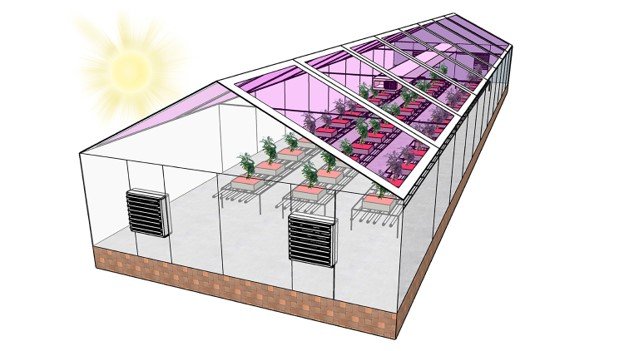
Many greenhouses could become energy neutral by using see-through solar panels to harvest energy –- primarily from the wavelengths of light that plants don’t use for photosynthesis.
Those are the findings of National Science Foundation-funded research conducted by engineering, plant biology and physics researchers at North Carolina State University.
“Plants only use some wavelengths of light for photosynthesis, and the idea is to create greenhouses that make energy from that unused light while allowing most of the photosynthetic band of light to pass through,” says Brendan O’Connor, corresponding author of the study.
“We’re able to do this by using organic solar cells, because they allow us to tune the spectrum of light the solar cell absorbs –- so we can focus on wavelengths of light that plants don’t use.
However, until now it wasn’t clear how much energy a greenhouse could capture if it was using these semitransparent, wavelength selective, organic solar cells.”
To address that question, researchers used a computational model to estimate how much energy a greenhouse could produce if it had semitransparent organic solar cells on its roof –- and whether that would be enough energy to offset the amount of energy the greenhouse required to operate effectively.
The model was developed to estimate energy use for greenhouses growing tomatoes at locations in Arizona, North Carolina and Wisconsin.
“A lot of the energy use in greenhouses comes from heating and cooling, so our model focused on calculating the energy load needed to maintain the optimal temperature range for tomato growth,” O’Connor says.
“The model also calculated the amount of energy a greenhouse would produce at each location when solar cells were placed on its roof.”
The results are published in the journal Joule.
“This project is an excellent example of how researchers from different disciplines can come together to benefit highly connected food, energy and water systems in the U.S. by creating new, lower-cost, and more efficient technologies,” says Brandi Schottel, a program director for NSF’s Innovations at the Nexus of Food, Energy, and Water Systems program.



